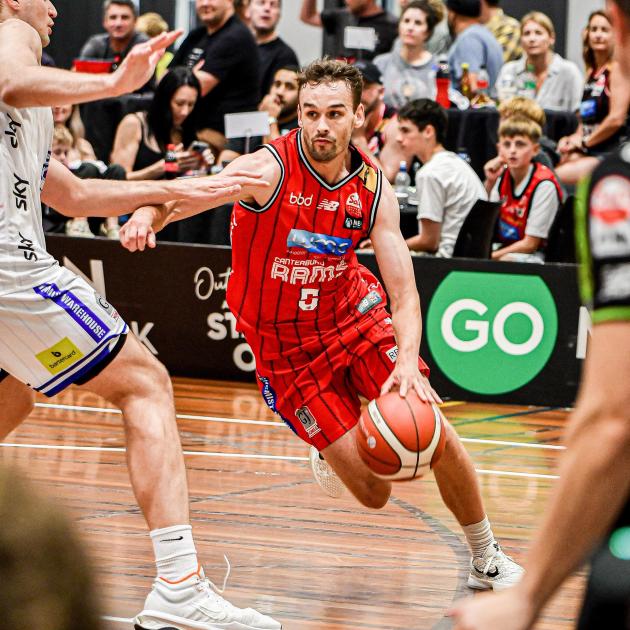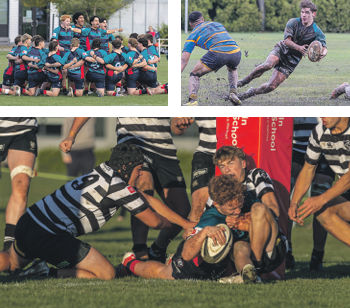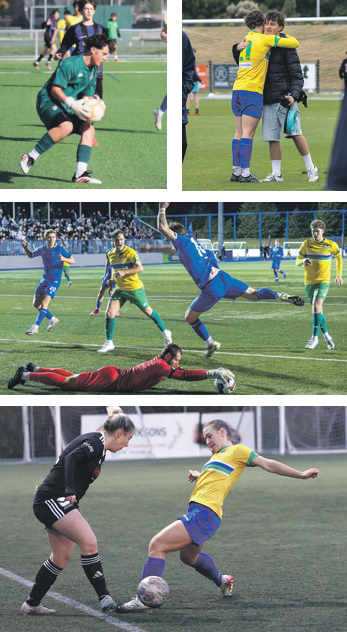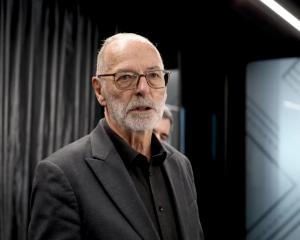
Martin Hunter
Hunter has been taking photographs professionally for 44 years. He has worked for newspapers including The Star, taken pictures for agencies such as Getty and Photosport, and now contracts to organisations including New Zealand Rugby.
Despite photographing Olympic Games and Rugby World Cup finals, he says he gets the same buzz from shooting a grassroots club match on a weekend
“I challenge myself to take the same mentality into a football game at Garrick Park, as a test match or World Cup final,” he said.
“I want to show these guys at their best, that’s what I like to do.”
Hunter began his career in 1981 as a cadet at The Dominion in Wellington, choosing the job over a year of study at Wellington Polytechnic.
“My parents said, ‘you might as well take the job rather than come out and do a year’s polytechnic course and then look for a job’,” he said.
“I would have liked to have had proper tuition, but looking back, I got the tuition from the other photographers while studying as a cadet at The Dominion.”
Only a few months into his first job, Hunter was thrust into the middle of protests during the contentious 1981 Springbok tour.
“As a young kid, 19, I had never experienced police in riot gear or big protests,” he said.
“You’ve got to think on your feet. You've got to make good decisions about what you’re doing. All the protests were secondary to thinking about exposures and light and whether I was doing the basics right.”

He also took photos at Wimbledon in 1985, capturing the moment 17-year-old German Boris Becker became the youngest person to win the famed tournament.
Hunter went over alongside reporter Joseph Romanos to cover the tournament and the British Open for the now long-gone INL media group
For Hunter, Christchurch remains the best place in the world to cut your teeth in sports photography.
“It might be a beautiful Saturday or Sunday afternoon, and believe it or not, you could be photographing a world-class sportsperson right there in front of you.
“You might not have the best camera in the world, it doesn’t matter. You’ve got to have the love of doing it for a start and getting out on the weekend and photographing these world-class players.”


What began as a hobby for the former first XI footballer and cricketer at St Thomas of Canterbury College, has become “a part-time job, in a sense”.
“I've always had somewhat of a creative kind of mind,” he said.
“I just picked up a camera, started going down to sports games and it just took off from there.”
Now studying graphic design and moving image at Canterbury University, Bird balances coursework with photography for Christchurch United, Christchurch Boys’ High School’s first XV, and has done work for the Canterbury Rams and Basketball New Zealand, in both photography and design.
“It’s working out quite well at the moment thankfully,” he said.
“Graphic design and photography is definitely a thing that doesn’t happen right away.
“Over the last year or so, I can definitely tell, looking back on my socials and portfolio, that I’ve grown and improved a lot.”
That growth has fuelled his brand, Thomas Creative, with one of his Instagram reels recently pulling 500,000 views.
"The growth recently has been insane,” he said.
Although winter weekends are now spent behind the lens, Bird still pads up for his Burnside West University cricket team in the summer.

For Harris, a full-time mum from Lincoln, photography has brought a sense of purpose while living with pain from a serious car crash 13 years ago.

“It (photography) is the only thing I do that can get me away from the noise of my everyday life,” she said.
Harris first picked up the camera to photograph her son Harry playing junior rugby for Prebbleton. These days she follows him in the Selwyn Schools side, often capturing his lifelong friends as well.
For the last two years he has turned out for the Selwyn Schools team, and Harris has been there to take photos of him and his teammates.
With some of them also being Harry’s lifelong friends, every photo feels personal.
“If one of them has a great game or it’s their cap game, and I get a really cool shot of that kid, that’s what it is about for me,” she said.
“The care I have for these boys, I absolutely love them.”
Being an amateur photographer certainly has its challenges. Harris receives only small donations for her work.
“I would have loved to be able to earn more from it,” she said.
“I might earn a couple of hundred (dollars) a season. I would be more serious about it if I could afford to, but equipment is so expensive.”
With Harry leaving school at the end of the year, Harris hopes to continue taking photos of his games if he keeps playing – if not, then his mates either still in school or at club level.
"If his mates keep in touch, which I think they should, then I’ll definitely be out there every Saturday with them,” she said.

For Cozzone, photography is a family affair.
He and his wife Megan run Green Melon Photography, which specialises in portraits and commercial headshots. Two of their teenage sons, Mitchell, 18, and Ashton, 16, are also developing their own passion for sports photography.

Mitchell, Ashton, and Cozzone’s younger sons Mason, 14, and Colton, 12, play or have played for Cashmere Technical, and the family are also heavily involved further with the club, taking portraits for the men’s and women’s first teams, and covering games.
Mitchell, now on an OE in the United States, took on the job of covering games by himself, posting football photos online under the handle Dust Media, while also shooting for Cashmere High School’s basketball team.
Cozzone and Ashton have taken over shooting and posting duties since he left the country.
“I can rely on Ashton to put the photos in Lightroom, put the watermark on them and edit, all that kind of stuff,” Cozzone said.
“It’s a real cool thing. It will be nice when Mitch comes back, and we can all do it.”
The family connection is special for Cozzone.
“It’s actually really good just spending time with them, doing something other than being at home.
“I can give them (Mitchell and Ashton) tips or advice.
“Back in the day, they would shadow me around, but now I can happily send them to the other side of the field and say ‘go for your life’.”













